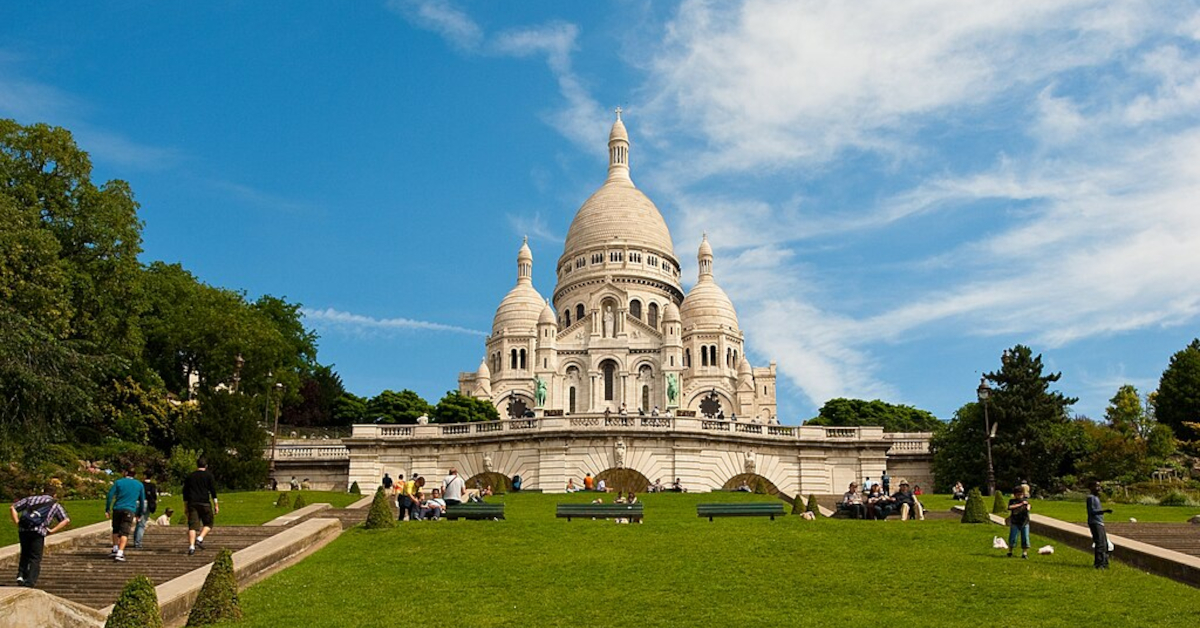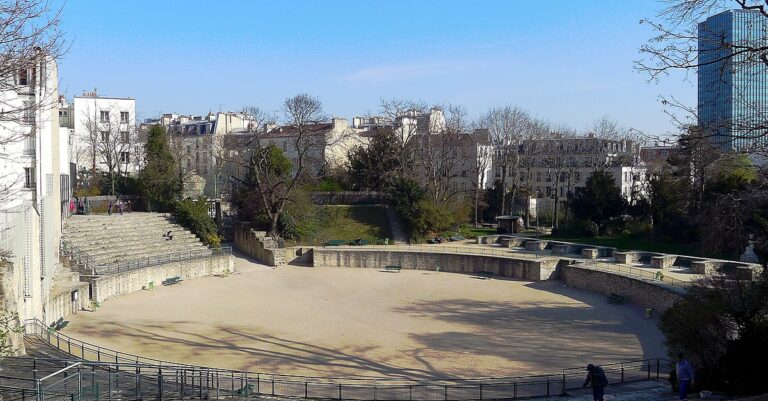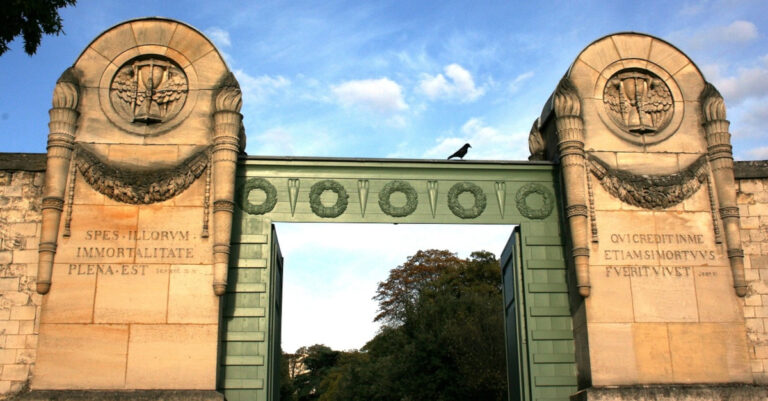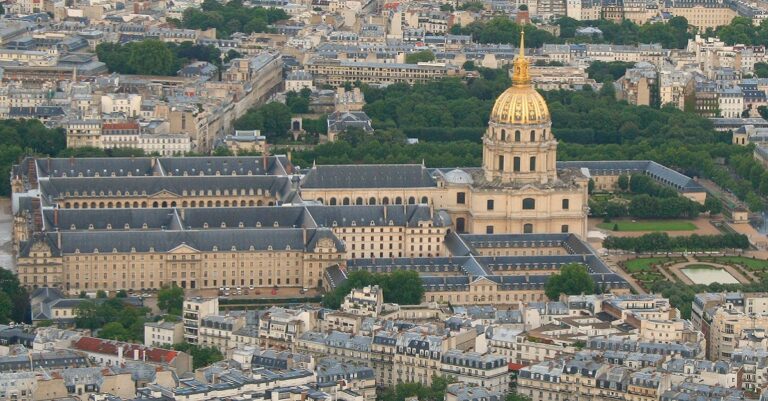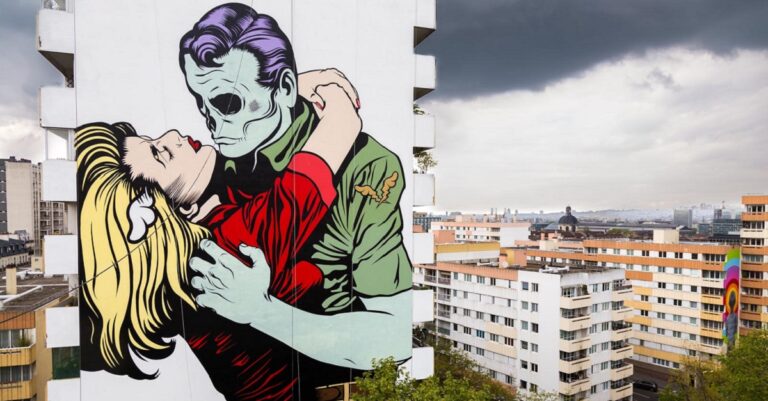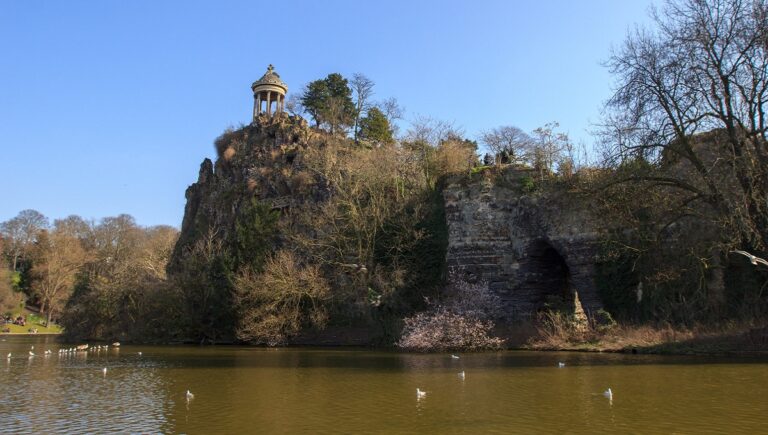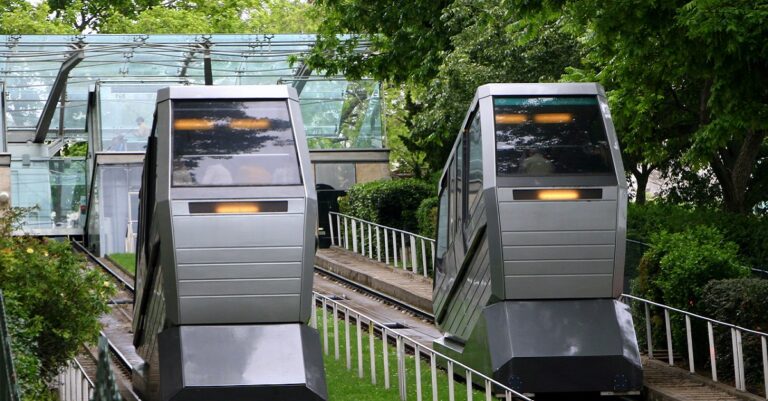Visit Montmartre: 20 Must-See Places
Today, visiting Montmartre is a must for both Parisians and tourists. Every year, the neighborhood attracts millions of visitors who come to admire its unusual monuments, picturesque streets, and the village-like charm perched on the hills of Paris’ 18th arrondissement.
Since Antiquity, the Butte Montmartre has been a place of belief and spirituality. Many religious buildings still bear witness to this history today.
Originally, Montmartre was mainly agricultural land, known for its windmills and vineyards. But in the 19th century, with the expansion of Paris, the neighborhood became a haven for struggling artists, drawn by its low rents and bohemian atmosphere. Alcohol was also untaxed here, adding to its festive and popular appeal.
In 1860, Montmartre was annexed to Paris and underwent rapid urbanization. Yet despite these transformations, the district has managed to preserve its soul and its village identity. Today, by coming to visit Montmartre, you’ll discover not only unusual monuments but also the rich artistic, religious, and agricultural heritage of the area.
👉 Whether you are wondering what to see in Montmartre or simply looking for a timeless stroll, this neighborhood will charm you.
In this article, you will discover:
To explore these monuments in a fun way, join our Montmartre treasure hunt.
The unusual religious monuments to visit in Montmartre
The Fountain of Saint Denis – the Fountain of Fidelity
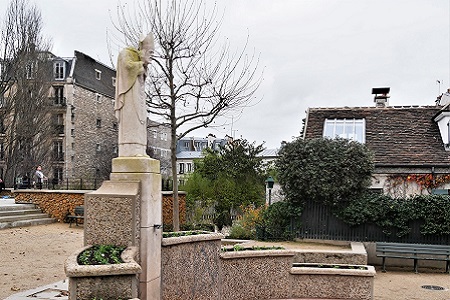
In 250 AD, Saint Denis came to Paris to convert its inhabitants to Christianity. He was arrested and decapitated.
Legend says he walked six kilometers carrying his head in his hands, praying until he reached the site where the Basilica of Saint-Denis now stands.
On his way, he stopped at a fountain to wash his head – this is the site of today’s Saint-Denis Fountain.
The statue of Saint Denis on the fountain dates from 1941, though the fountain itself is much older.
Legend has it that women who drink its water will remain faithful.
The name Montmartre means “Mount of Martyrs,” in honor of Saint Denis.
The Sacré-Cœur Basilica
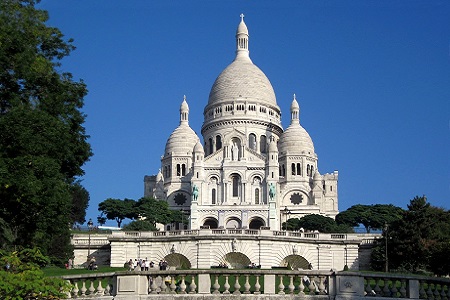
Since ancient times, the Butte Montmartre has been a place of worship for many cultures: Gaulish Druids, Romans with temples to Mars and Mercury, the Church of Saint-Pierre, and today the Sacré-Cœur Basilica, built in the late 19th century.
In 1870, after France’s defeat to Prussia, many saw this as a spiritual punishment. To seek forgiveness, the decision was made to build the Basilica of Montmartre.
👉 One of the riddles in our Montmartre treasure hunt is based here.
The Carmel of Montmartre
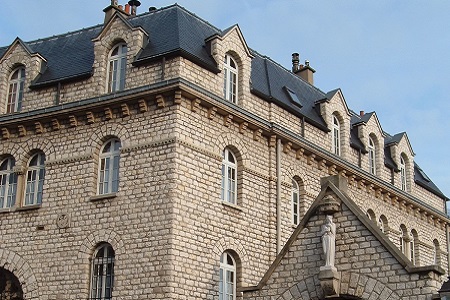
Built in 1928, the Carmel of Montmartre is a convent dedicated to prayer, silence, and peace near the Sacré-Cœur.
Around twenty nuns still live there today, devoting their time to prayer and artisanal work such as knitting children’s clothes.
Saint-Jean Church
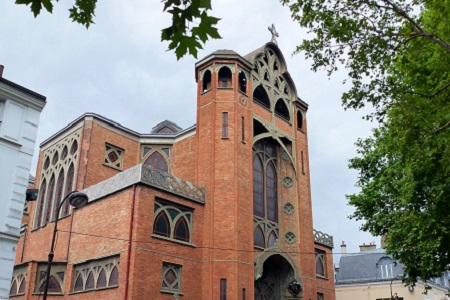
Built between 1894–1904, this church was groundbreaking for its time. Influenced by Art Nouveau, it was constructed in reinforced concrete and covered with bricks and ceramics.
Controversial for its architecture, it even faced lawsuits demanding its demolition.
👉 Another of our Montmartre riddles is linked to this site.
Saint-Pierre de Montmartre Church
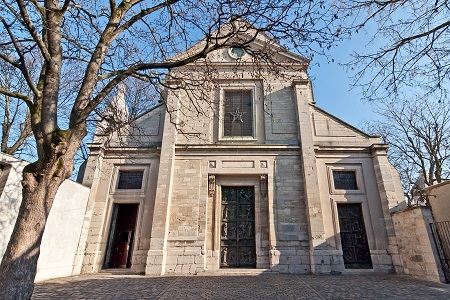
One of the oldest churches in Paris, built in 1133 under Louis VI.
It suffered heavily during the Hundred Years’ War, was ransacked during the Revolution, occupied by Russian troops in 1814, and narrowly escaped demolition in 1896.
The structure we see today is thanks to a major restoration between 1899 and 1905 by architect Louis Sauvageot.
Artistic Landmarks of Montmartre
Le Bateau-Lavoir
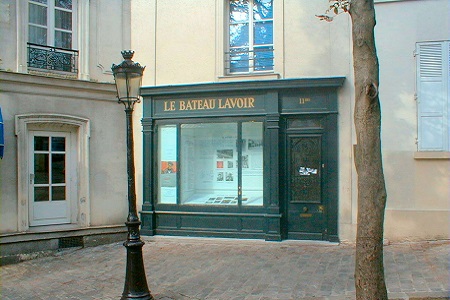
This modest building became the home of painters and writers in the early 20th century.
Poor artists, many foreigners, moved here after being priced out of central Paris. Montmartre’s cheap rents, untaxed alcohol, and lively nightlife made it irresistible.
This artistic melting pot fueled innovation. In 1907, Picasso painted Les Demoiselles d’Avignon here — considered the first Cubist painting.
The name Bateau-Lavoir (“Washhouse Boat”) comes from the poor living conditions, with overcrowded, cold winters and stifling summers, reminiscent of a cramped boat.
👉 A riddle in our Montmartre treasure hunt is based here.
La place du Tertre
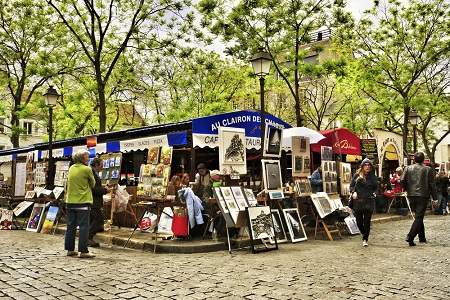
One of the most famous squares in the world, known for its painters, caricaturists, and portrait artists.
A favorite stop for tourists.
👉 Another treasure hunt riddle is set here.
Halle Saint-Pierre
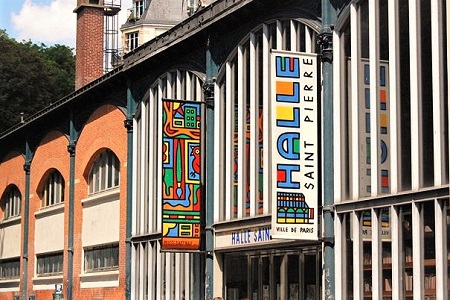
Halle Saint-Pierre was built in the 19th century; it has a metal framework and an architecture in the Baltard style.
Baltard is an architect known in particular for having built Les Halles of Paris.
Halle Saint-Pierre was first a market, then a school, and finally a museum devoted to contemporary art.
It is made up of a gallery, a bookshop, a café, a museum, and an auditorium.
It is known for hosting magnificent temporary exhibitions throughout the year.
The passe murail
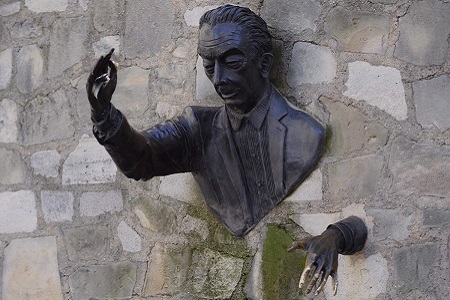
This statue is a tribute to the writer Marcel Aymé.
It refers to a short story published in 1941, which tells the story of a man who has the power to walk through walls; he uses it to take revenge for misfortunes he suffered.
One day, he loses his gift while passing through one of the walls of his house and remains stuck.
A riddle in our Montmartre treasure hunt concerns the Passe-Muraille.
La Bonne Franquette
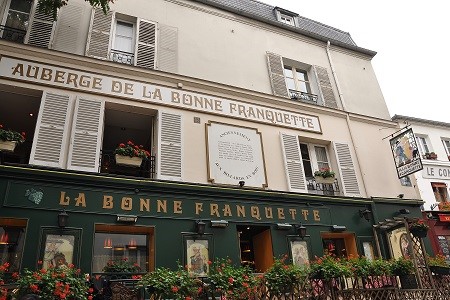
La Bonne Franquette is a traditional restaurant with a friendly atmosphere located next to Place du Tertre.
It offers musical and dancing entertainment.
Its garden, its dishes, and its quality service make it one of Paris’s romantic addresses.
Vincent van Gogh, who lived in the Montmartre neighborhood, painted his famous 1886 canvas La Guinguette here, now exhibited at the Musée d’Orsay.
The bust of Dalida
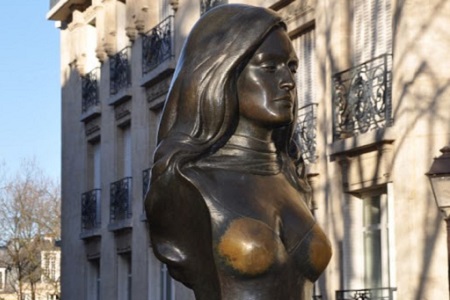
Legend has it that touching the bust of Dalida brings good luck. Many passers-by touch her chest—as evidenced by the wear marks on that part of the bust.
Iolanda Gigliotti (1933–1987), known as Dalida, was a French singer and actress of worldwide renown.
She came from an Italian family settled in Egypt; in 1954 she moved to Paris, then in 1962 to the Montmartre neighborhood of Paris, a district she particularly loved.
She is known for her legendary beauty—crowned Miss Egypt in 1954—as well as for songs that made her a key figure of French chanson. She took her own life in 1987 after losing several loved ones.
In 1997, the Montmartre neighborhood decided to pay tribute to her by creating this square: Place Dalida.
A riddle in our Montmartre treasure hunt concerns this place.
La maison Rose
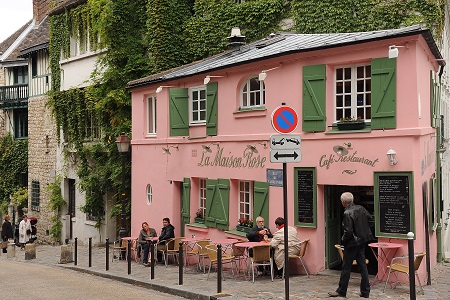
La Maison Rose is one of the most famous buildings in Montmartre.
It is well known thanks to the paintings of Maurice Utrillo, a painter of the Butte’s urban landscapes.
Montmartre was annexed to Paris in 1860; its small-village setting with vineyards, windmills, and low rents made it one of the centers of Parisian artistic life.
Many well-known artists frequented this neighborhood: Jean-Baptiste Corot, Théodore Géricault, Auguste Renoir, Edgar Degas, Paul Cézanne, Max Jacob, Guillaume Apollinaire, Juan Gris, Maurice de Vlaminck, Georges Braque, Pablo Picasso, Suzanne Valadon, Maurice Utrillo.
Our Montmartre treasure hunt ends at La Maison Rose.
Studio 28
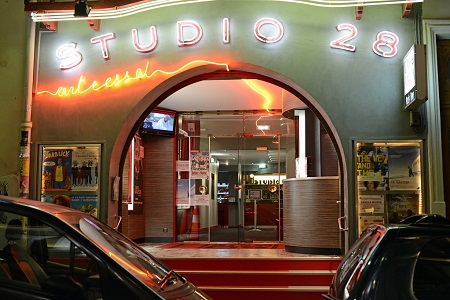
Studio 28, located in Montmartre, is one of the oldest cinemas in Paris; it opened in 1928.
Its 170-seat theater is still operating today.
This venue has the particular feature of a garden transformed into a café; in this garden there is a mural dedicated to cinema.
It remains one of the most emblematic places of Montmartre life, and its décor continues to be used for film shoots; for example, in 2000 it was used in the famous film Le Fabuleux Destin d’Amélie Poulain (Amélie).
The Wall of “I Love You”
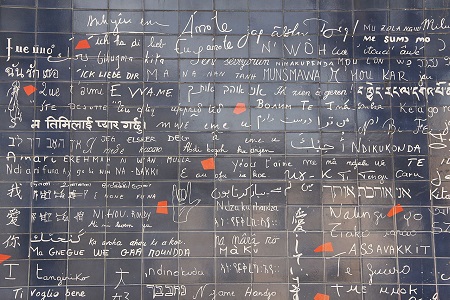
The Wall of “I Love You” is a mural consisting of 311 “I love you” in 250 different languages.
The wall is a symbol of separation; the artist wanted to transform it so it would become a support for love.
In this work, each red fragment represents a part of a heart which, once assembled, forms a complete heart.
A riddle in our Montmartre treasure hunt takes place here.
Le Lapin Agile
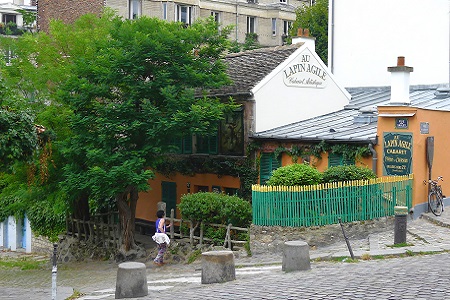
Le Lapin Agile is one of the oldest cabarets in Paris, much frequented by famous artists like Picasso and Maupassant.
In 1880, the caricaturist André Gill created its sign: a rabbit escaping from the cooking pot that was meant for him—hence the establishment’s name “Le Lapin à Gill,” then “Lapin Agile.”
It was the site of a gigantic artistic hoax during which a work amazed the public, although it had in fact been painted by Lolo (the Lapin Agile’s donkey).
A riddle in our Montmartre treasure hunt concerns this place.
The unusual places to visit from agricultural Montmartre
The Clos de Montmartre
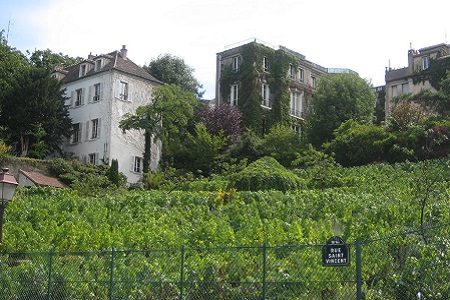
Vines have grown here since 944, mainly for local consumption.
From 1860 onward, following Montmartre’s annexation to Paris, urbanization developed very quickly at the expense of farmland.
In 1933, the City of Paris created the Clos-Montmartre and planted around 2,000 vines on this plot, in order to restore the wine-growing past of the village of Montmartre.
The Moulin Rouge
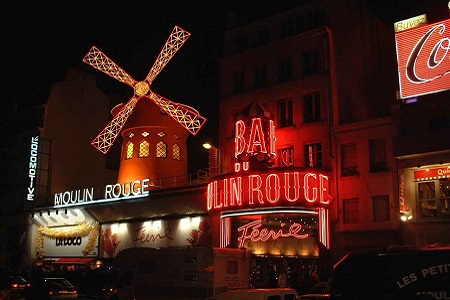
The Moulin Rouge is the most famous Parisian cabaret in the world. Founded in 1889, it has a revolutionary architecture that allows it to change sets quickly.
Legendary shows, the French cancan, champagne, humor—these are the ingredients that make this high temple of Parisian entertainment so renowned.
The moulin de la Galette
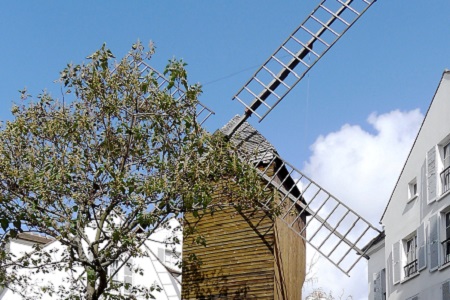
The Moulin de la Galette bears witness to an agricultural Montmartre; it was built in the 17th century.
It was transformed in 1870 into a famous guinguette (dance hall).
It is a place very frequented by painters; it owes its popularity to a painting by Renoir, Le Bal du Moulin de la Galette.
A riddle in our Montmartre treasure hunt concerns this place.
Other emblematic places to see in Montmartre
Le Square Marcel Bleustein Blanchet
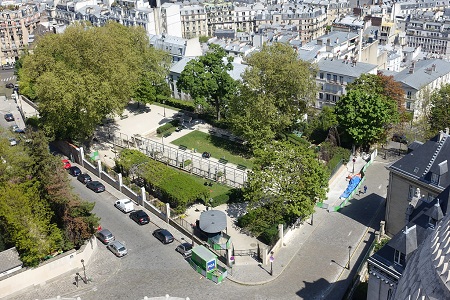
This park is located on the former site of the Moulin de la Turlure.
It takes the name Square Marcel Bleustein Blanchet to pay tribute to this man.
Marcel Bleustein came from a Russian Jewish family.
In 1926, he founded Publicis with his brother.
In 1935, he bought the private radio station Radio LL, renamed it Radio Cité, launched the first spoken news bulletin, and thus gained considerable influence.
In 1939, war was declared; he was mobilized as an airplane pilot.
In June 1940, with the arrival of the Germans in Paris, his properties were seized.
He then joined the Resistance under the pseudonym “Blanchet.”
A name taken from a World War I soldier listed on a war memorial. This code name allowed him to join De Gaulle in London, where he piloted US Air Force bombers.
He received numerous decorations for his acts of bravery.
In 1954, he returned to Publicis and made it the third most important company in the world in the advertising sector.
The chevalier de La Barre
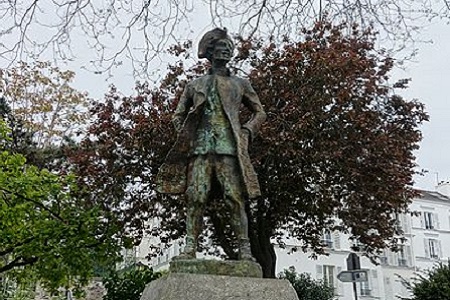
The Chevalier de La Barre was condemned for singing impious songs and for not taking off his hat before a religious procession.
The judges ordered that his tongue be torn out, his hand cut off, and his body burned over a slow fire; they also applied torture to learn how many songs he had sung and how many processions he had seen pass with his hat on his head.
Voltaire was outraged by this barbarity; he recounted it in the Philosophical Dictionary.
His execution is one of the major events initiating the process of the “de-Christianization” of France in the 18th century.
He has become a symbol of the fight for secularism and an icon of Free Thought.
Conclusion: why visit Montmartre?
Visiting Montmartre is much more than a simple walk in the 18th arrondissement of Paris. It is a true journey through time and cultures.
Over the course of this article, we have discovered:
-
The unusual monuments to visit from religious Montmartre
-
The unusual places to see from artistic Montmartre
-
The agricultural vestiges that recall Montmartre’s rural past
-
And other emblematic places that make the heart of this unique neighborhood beat
Every street corner, every square, every cabaret tells a story. Between spirituality, artistic bohemia, and village charm, Montmartre is a neighborhood that has managed to keep its soul while becoming one of the most emblematic places in Paris.
👉 If you’re wondering what to do in Paris, take the time to visit Montmartre: its cobbled lanes, its artists, its unusual monuments, and its romantic atmosphere will leave you with unforgettable memories.

